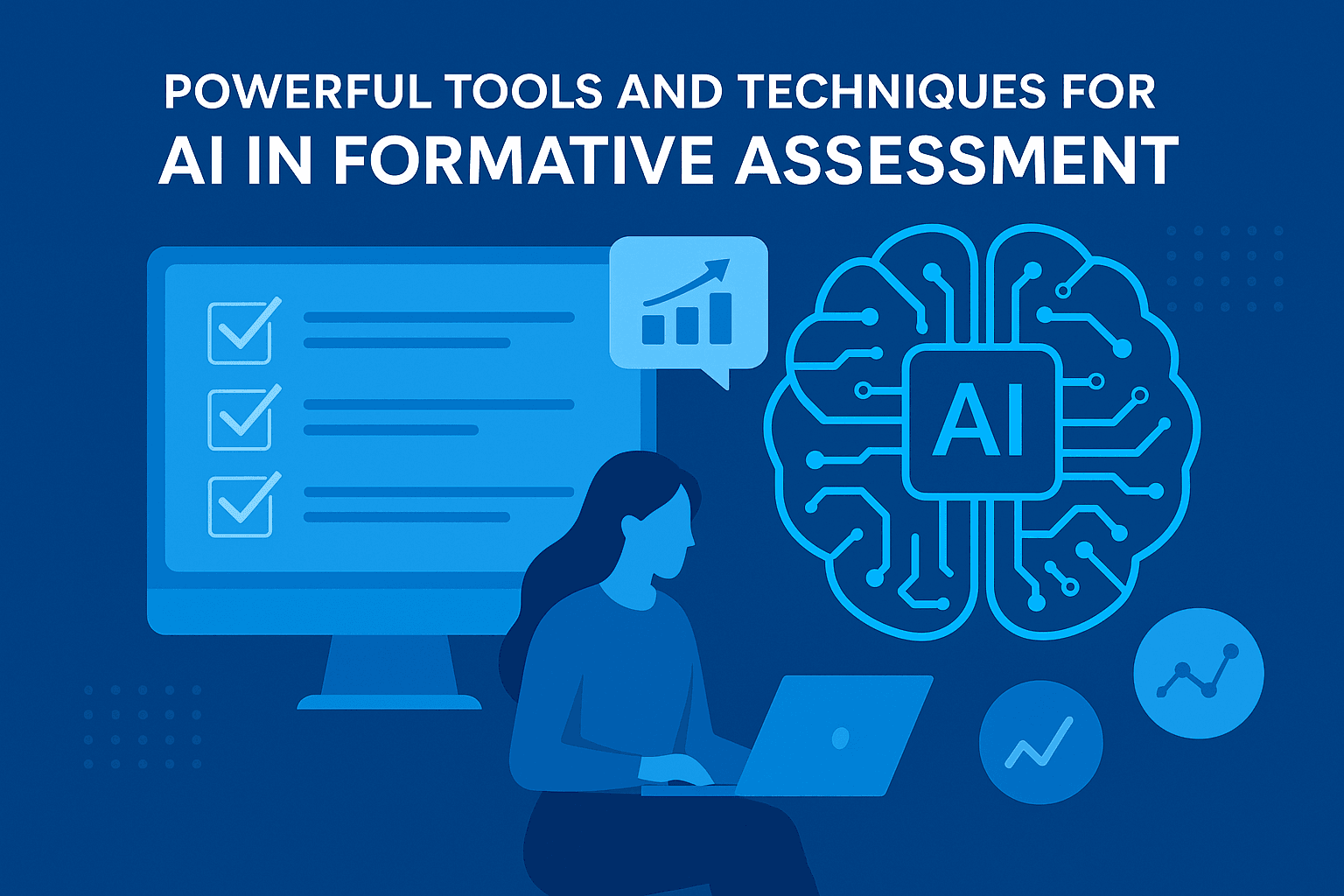
AI in formative assessment is rapidly transforming how educators support student learning in real-time. Unlike summative assessments that evaluate final outcomes, formative assessments are continuous processes that provide feedback throughout the learning journey. Integrating AI into this process unlocks new possibilities making assessments smarter, faster, and more personalised.
Formative assessment is critical for identifying learning gaps, tracking student progress, and adapting instruction. With the help of AI, educators can now automate these processes, delivering targeted support at scale. From intelligent quizzes to automated feedback engines, AI in formative assessment is enabling responsive teaching and improved learning outcomes.
The Rise of Intelligent Tutoring Systems: A New Era in Education
Why AI in Formative Assessment Matters
One of the most significant advantages of AI in formative assessment is the ability to offer real-time feedback. For example, platforms like Khan Academy and Century Tech use AI algorithms to analyse student answers and provide instant suggestions or next steps. This immediate feedback loop not only accelerates learning but also helps learners take ownership of their progress.
In traditional classrooms, giving individualised feedback to every student is time-consuming. AI tools now make this possible in seconds. For instance, Gradescope allows teachers to automate the marking of open-ended responses using machine learning, while providing students with timely, structured feedback tied to learning criteria.
Examples of AI Tools for Formative Assessment
1. Quizalize
This AI-enabled quiz platform gives teachers a real-time dashboard of student performance. As learners answer questions, the system analyses accuracy and speed, then sorts students into ability groups for targeted instruction. Teachers can instantly identify who needs help and with which concepts.
2. ScribeSense
Used in both K–12 and higher education, ScribeSense applies AI to scan and grade paper-based assessments. Teachers upload handwritten assignments, and the tool evaluates responses against preset rubrics, providing rapid insights into areas where students are struggling.
3. Knewton Alta
This adaptive learning platform uses AI to deliver customised content and assessments based on each learner’s progress. If a student consistently gets certain questions wrong, Alta revises the content path and offers practice in the specific skill until mastery is achieved.
4. Edmodo Snapshot
This formative tool incorporates AI to provide standards-based quizzes that adapt in real time. Teachers receive detailed reports on class-wide and individual understanding, enabling proactive intervention.
Techniques Supported by AI in Formative Assessment
1. Adaptive Quizzing
AI assesses a student’s prior responses and adjusts the difficulty level of the next question accordingly. This ensures assessments remain challenging without being discouraging, and keeps learners in their zone of proximal development.
2. Predictive Analytics for Early Intervention
By using AI to analyse attendance, interaction patterns, and assessment data, institutions can flag students at risk of falling behind. Teachers can then provide formative support through tutoring, resources, or course adjustments.
3. Automated Feedback Generation
Natural Language Processing (NLP) is used to generate feedback on written assignments. Tools like Write & Improve (Cambridge English) offer real-time suggestions for grammar, vocabulary, and structure—enabling students to revise work before submission.
4. Real-Time Dashboards for Teachers
AI analytics tools present data on learning patterns via dashboards. Teachers can visualise which concepts the majority of students understand and which need re-teaching—allowing informed and timely pedagogical decisions.
5. Voice and Image Recognition in Assessments
In language or music education, AI can assess pronunciation or pitch accuracy. Tools like Duolingo use AI to analyse spoken input and offer immediate correction, enhancing formative practice in real time.
Benefits of AI in Formative Assessment
- Scalability: AI enables consistent feedback across hundreds of learners.
- Personalisation: Tailors learning journeys based on individual needs.
- Efficiency: Saves educators time by automating data analysis and marking.
- Timeliness: Offers real-time insights that inform immediate instruction.
- Engagement: Gamified AI tools can motivate students to participate more frequently.
Ethical Considerations
While the benefits are significant, using AI in formative assessment requires careful implementation. Institutions must ensure that student data is securely handled and that algorithms are transparent and bias-free. It is also essential that AI complements—not replaces—the professional judgment of educators.
Looking Ahead
As AI continues to evolve, so too will its role in formative assessment. Future innovations may include conversational AI tutors, emotional analytics to gauge engagement, and predictive feedback tailored to a learner’s future academic path.
Visit The Case HQ for 95+ courses
Read More:
Tips to Effectively Analyze a Business Case Study
How to Use Case Studies to Enhance Your Classroom Teaching Experience
Case Studies vs. White Papers: What’s the Difference and When to Use Each?
How Published Research Transforms Technological Advancements
Unraveling the Mystery of Case Studies in Psychology
The Role of Case Studies in Environmental Impact Assessments
Why Research Publications are Critical in Understanding Global Health Trends
Exploring the Real-World Impact of Case Studies in Urban Planning
Breaking Down a Case Study: An Interactive Walkthrough
How to Cite Case Studies and Research Publications in Your Work
How to Write a Compelling Case Study: A Step-by-Step Guide
The Role of Research Publications in Shaping Business Strategies
The Impact of Real-World Scenarios in Business Education
The Power of Field Case Studies in Understanding Real-World Businesses
https://thecasehq.com/powerful-tools-and-techniques-for-ai-in-formative-assessment/?fsp_sid=919
Comments
Post a Comment